Lifestyle
Planning Paros: Traveler’s guide to Greece’s chicest island escape
Located in the southeast of Greece, nestled among the Cyclades Islands, Paros is emerging as a true gem of the Aegean. As the third largest island in the Kyklades group, Paros is a harmonious blend of nature and elegance. Imagine beaches where every shade of blue dances in crystal clear waters, valleys blanketed with vineyards and olive groves, charming fishing villages and postcard-perfect white and pastel-hued houses. This is where simplicity meets sophistication.
You can reach Paros from Istanbul via a connecting flight through Athens with Turkish Airlines (THY) and its Star Alliance partners on one itinerary, or you can book your tickets separately: one for the Istanbul-Athens leg and another for the Athens-Paros flight.
Paros is well connected via a small domestic airport, linking effortlessly to Athens and Thessaloniki through reliable carriers like Aegean Airlines and Sky Express. The flight from Athens takes just 45 minutes, making it a quick escape. In high season, daily flights are frequent, but booking ahead is a smart move as seats tend to sell out fast.
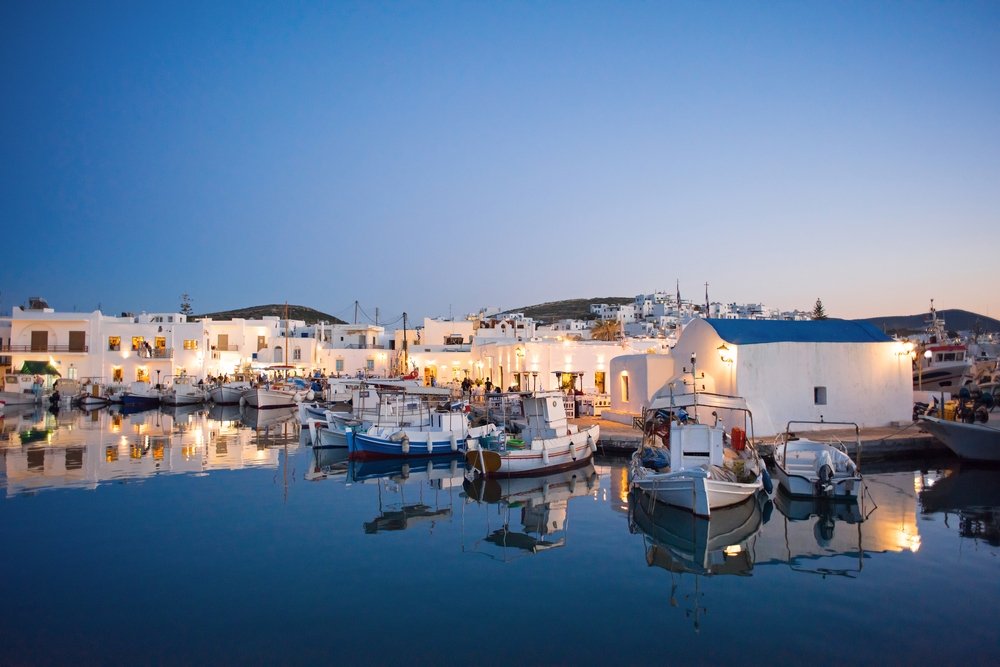
For a slower, scenic journey, ferries to Paros from Athens is a great option. Depending on the route, the ferry ride takes around three to 4.5 hours, offering a more relaxed introduction to the island’s magic.
Two souls of Paros
Paros offers something for every type of traveller. Whether you’re seeking a serene retreat, an active escape with diving and windsurfing, or a vibrant nightlife experience, Paros accommodates all moods effortlessly. The island revolves around two main hubs: Parikia, the main port and capital, and Naoussa, its lively and stylish northern village.
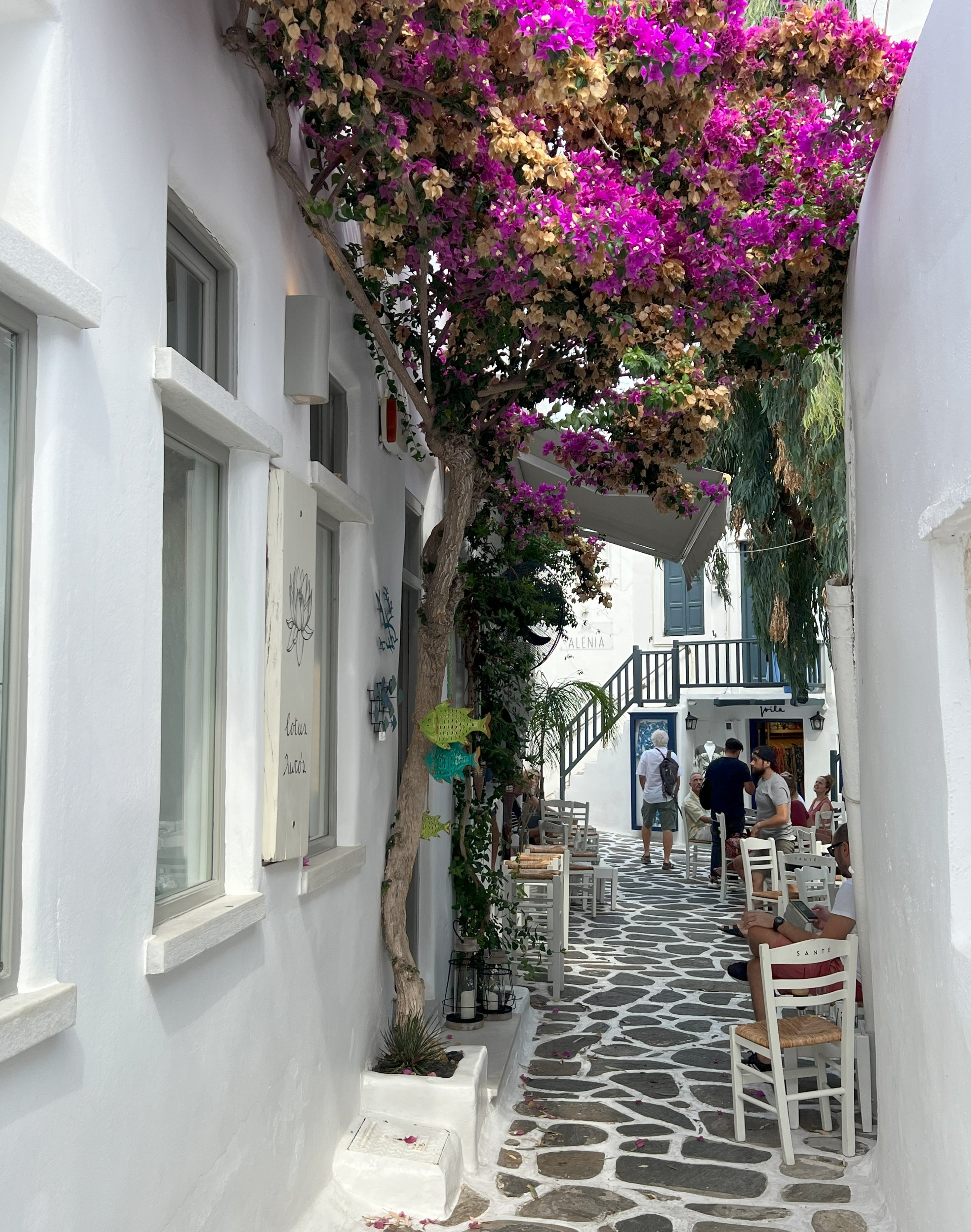
Step into Naoussa and you’re instantly transported to a Cycladic dream. With its whitewashed houses, cobblestone alleys, blue-domed churches and a harbour that glows with life, Naoussa exudes timeless Greek charm. At the port, you’ll often see freshly caught octopus hanging in the sun, while the nearby Venetian castle offers sweeping views over the village, framed by bougainvillea-covered houses and the endless Aegean. Don’t miss a walk up to Faneromeni (Panagía) Church perched on a hill, it’s the perfect sunset viewpoint with breathtaking panoramic views.
Parikia, on the other hand, is the island’s beating heart. With its traditional Cycladic architecture, picturesque promenade, golden sunsets and lively town square, it offers the perfect balance of energy and relaxation. This is where most ferries arrive, making it the practical entry point to Paros and a vibrant base for exploring the island.
At its center lies the historic Ekatontapiliani Church, the “Church of a Hundred Doors,” a Byzantine masterpiece dating back to early Christianity. Meander through Parikia’s labyrinthine streets, filled with charming shops, inviting cafes and buzzing tavernas. Nearby, several beautiful pebble sand beaches offer plenty of swimming options, while the hilltop castle built in 1260 by Duke Sanoudos adds a touch of history. Today, Parikia is home to around 5,000 year-round residents and remains the cultural and historical soul of the island.
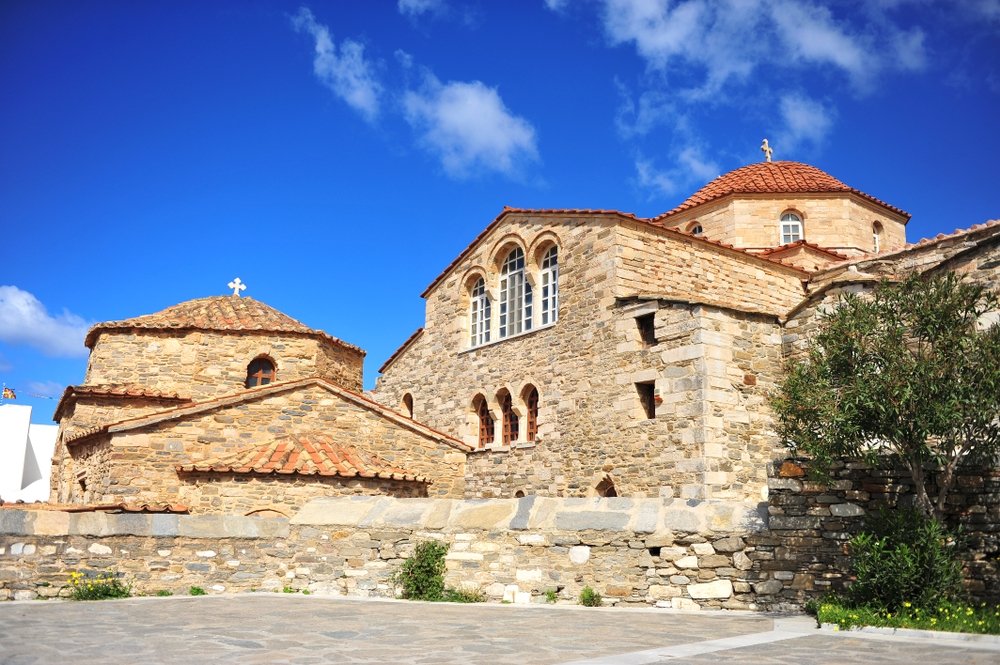
Parocks Hotel & Spa
A beacon of elegance among Paros’s luxury offerings, Parocks Hotel & Spa is a five-star boutique escape with just 40 rooms and suites, making it an ideal sanctuary for couples and honeymooners. Nineteen of the rooms boast private Jacuzzis, while 13 feature private pools. The eight spacious suites take it a step further, offering fully private plunge pools.
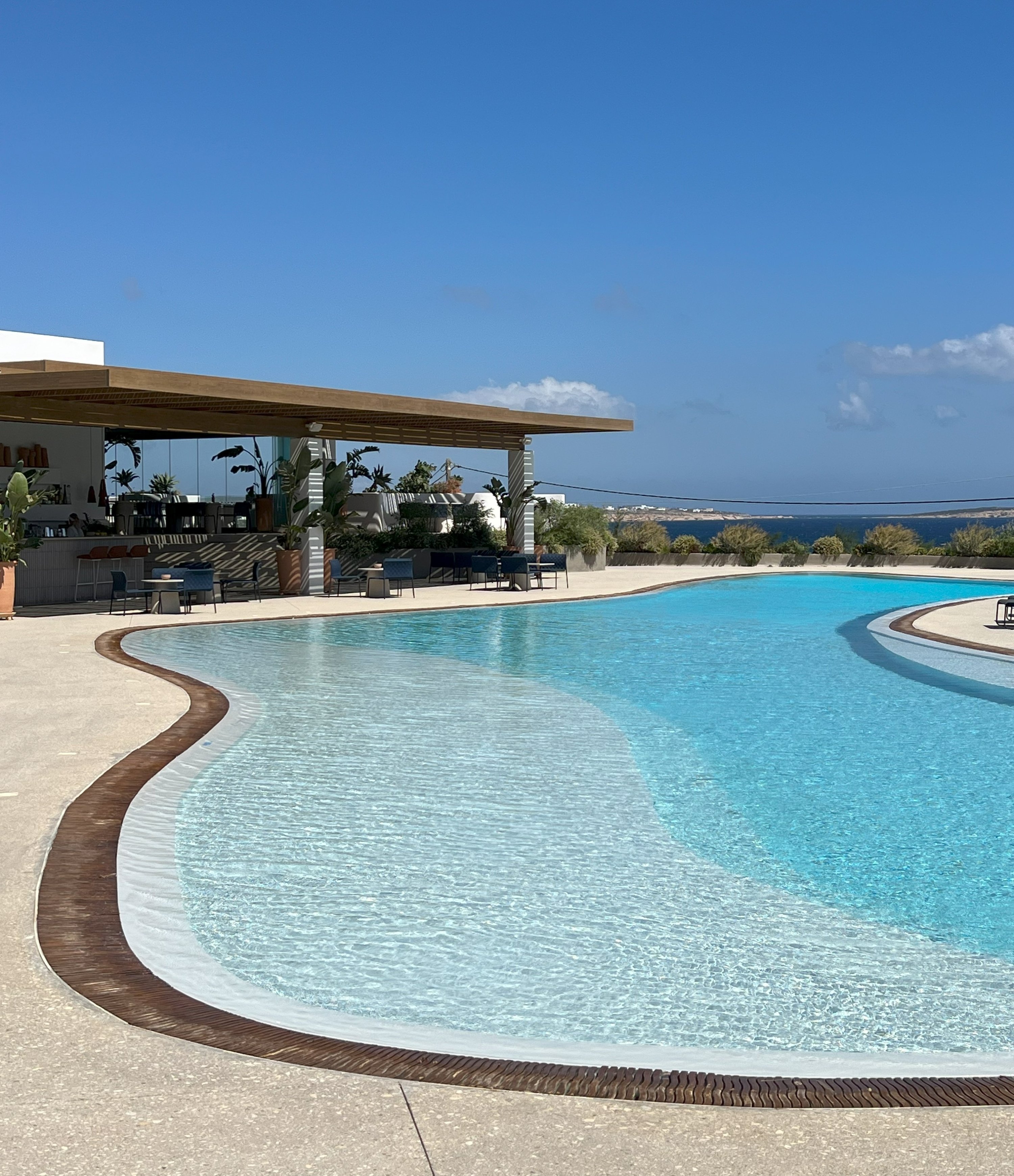
The heart of the hotel is its stunning restaurant and poolside bar the perfect spot to watch the sun dip into the sea while sipping a signature cocktail. Just 5 kilometers (3.11 miles) from Naoussa, Parocks is nestled in a peaceful corner of the island, yet close enough to the action. With its minimalist design and focus on tranquillity, it offers the perfect retreat for those seeking seclusion with a touch of indulgence.
For those wanting to explore more freely, renting a car or scooter is highly recommended. Paros is dotted with idyllic beaches and scenic coastal drives and given the limited number of taxis, having your own transport is a major plus. Parocks Hotel is located about 22 kilometers from Paros National Airport.
Andronis Minois Hotel
A newcomer to the island’s luxury hotel scene, Andronis Minois opened its doors in 2023 and is already making waves. With 44 suites and rooms, the hotel is part of the prestigious Small Luxury Hotels (SLH) collection. Located just five minutes from the airport and 10 minutes from Parikia, it offers both convenience and seclusion.
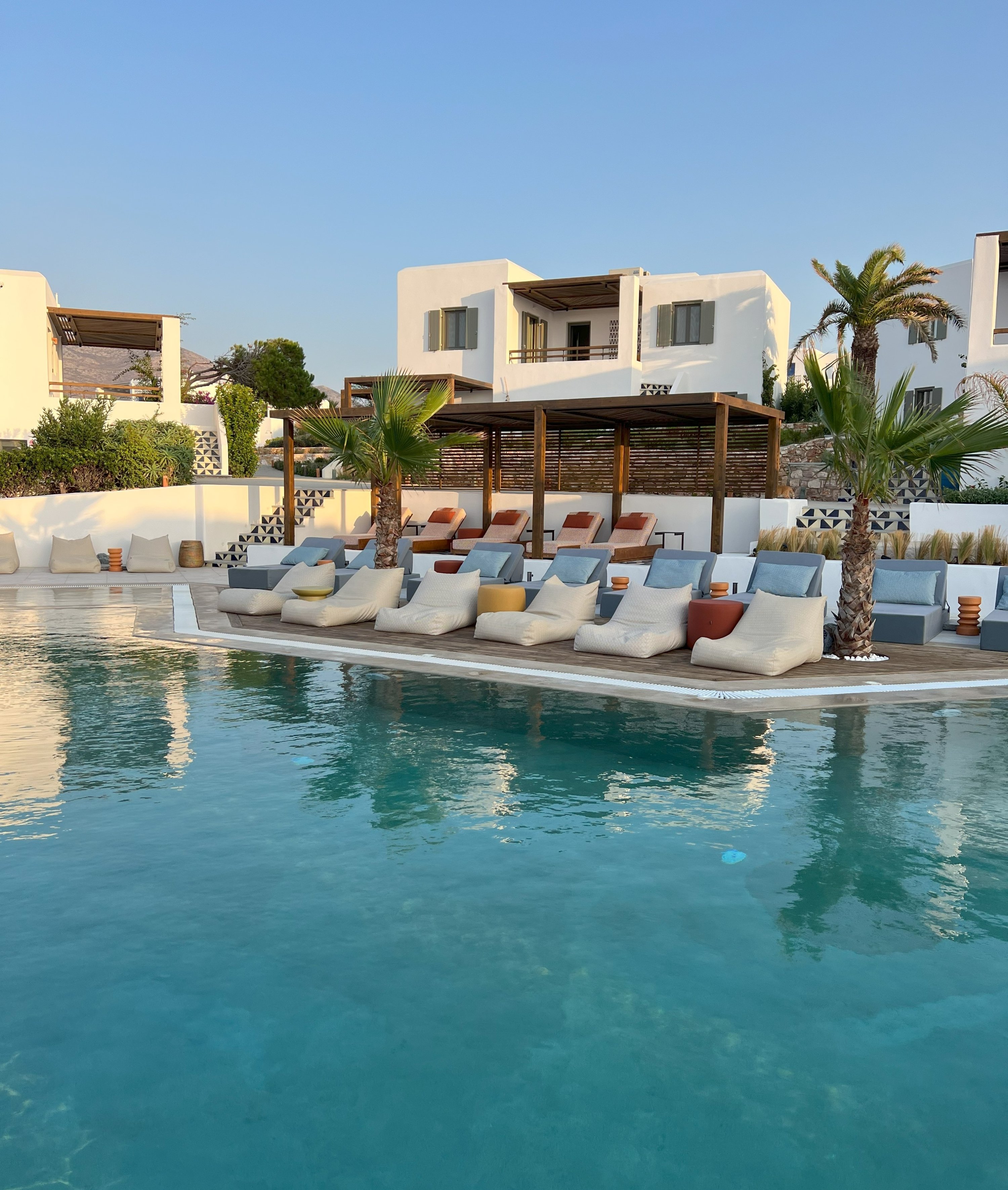
Perched on rocky cliffs near the 300-meter-long (984.25-foot-long) Parasporos Beach, the hotel offers quick access to several other beaches on the island. Rooms come with private balconies or terraces and select suites feature expansive pools and panoramic sea views.
The in-house restaurant, OLVO, is helmed by chef Tsantilas. Expect an exceptional culinary journey blending refined Greek Flavors with contemporary flair. Be sure to book a table for dinner, as the sunset here is a visual not to miss and the food is a gastronomic feast.
What makes Andronis Minois especially memorable is its warm hospitality and relaxed ambiance, it feels less like a hotel and more like your home away from home.
Lifestyle
Nature lovers find refuge in Bosnia’s Blidinje Park, Dreznica River
With the arrival of summer, Blidinje Nature Park and the Dreznica River – two of Bosnia-Herzegovina’s hidden natural treasures – are emerging as top destinations for both domestic and international tourists.
Visitors seeking to escape the crowds are increasingly drawn to the serene landscapes of southern Bosnia-Herzegovina, where Blidinje and Dreznica offer pristine nature and tranquility.
Declared a nature park in 1995, Blidinje is nestled between the Cvrsnica and Vran mountains. It has become one of the country’s most visited spots thanks to its rich biodiversity and scenic surroundings.
The park is also home to Blidinje Lake, the largest mountain lake in Bosnia-Herzegovina. Its fresh air and unspoiled environment make it a popular summer retreat.
Among Blidinje’s key attractions are 150 medieval tombstones, known locally as “stecci.” These ancient stone monuments, designated as a National Monument of Bosnia-Herzegovina, offer visitors a glimpse into the region’s storied past.
Located near the towns of Jablanica and Mostar, the park attracts hiking enthusiasts, many of whom ascend Cvrsnica Mountain to reach Hajduk Gate –a natural rock formation that offers breathtaking views from the summit.
Turquoise waters
North of Mostar, the Dreznica River winds through dense forests and rugged cliffs, mesmerizing visitors with its turquoise waters and crystal-clear streams.
A tributary of the Neretva River, Dreznica has gained attention in recent years as one of the country’s hidden jewels. While long cherished by locals, it has become a favorite among tourists as well.
The river, which creates natural pools among the rocks, is often described as “magical” by those who visit. Nearby, travelers can also explore three waterfalls, each ranging from 10 to 12 meters (33 to 39 feet) in height.
Dreznica offers a peaceful setting, far from the noise and bustle of city life – a place where nature lovers can relax and reconnect with the outdoors. The area continues to attract a growing number of visitors each year.
As they explore southern Bosnia-Herzegovina, tourists are increasingly venturing beyond the well-known sites to discover the country’s lesser-known natural wonders.
Lifestyle
Journey through Bangladesh’s green heart to world’s longest beach
What began as an idea to explore the world’s longest beach turned into a fabulous tour of beautiful tropical green, pastoral landscapes criss-crossed by rivers, wonderful cuisine and an exciting shopping scene.
Surprising start
I arrived in Dhaka immediately after Qurban Bayram, also known as Eid al-Adha, to escape the megacity as quickly as possible to the serene coast of Cox’s Bazar in the southeast.
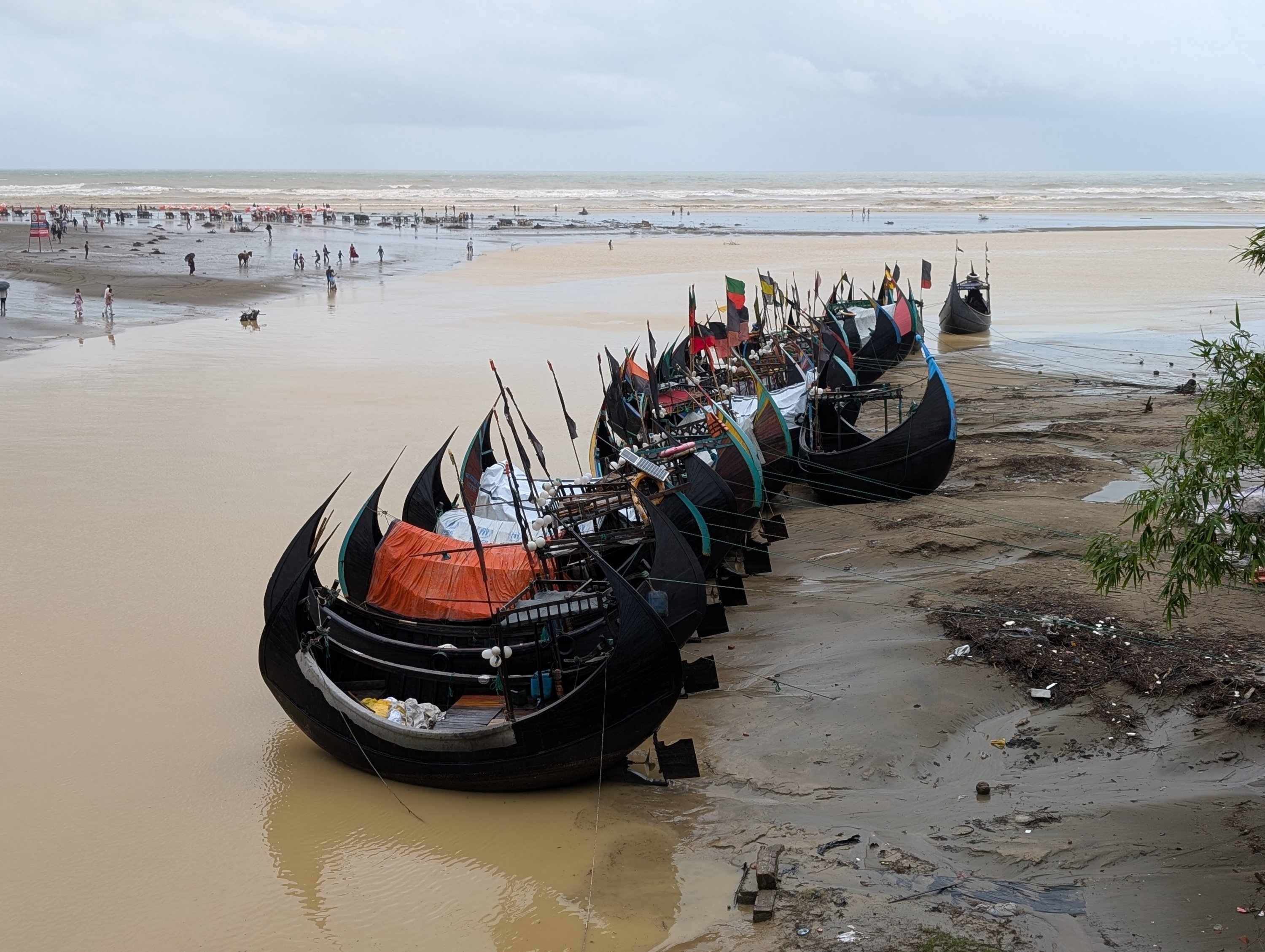
Lo and behold, despite Dhaka’s image as a traffic-clogged place, I mostly encountered clear roads. Cars zipped by in Banani and Gulshan, two of Dhaka’s top neighborhoods and battery-powered cycle rickshaws ran smoothly. These rickshaws, which were previously pedal-driven, enjoy a kind of heritage status in the metropolis of 23 million.
So, what happened to the traffic congestion Dhaka residents always complain about?
“You will see when you return from your beach holiday. Half of Dhaka is empty because of the Eid holiday,” a Bangladeshi friend told me.
It was due to holiday demand that I struggled to book a beach hotel in Cox’s Bazar in time. Combined with the weekend, it became an extended Eid holiday, so it dawned on me that I would have to cool my heels in Dhaka for a couple of days more.
City exploration
I got busy exploring the modern neighborhoods as well as Old Dhaka. Despite “half of Dhaka” being empty, the city’s famous shopping haven – comprising New Market, New Super Market, Chandni Chowk and Gausia Market – was full of people. It is a shop-till-you-drop scenario.
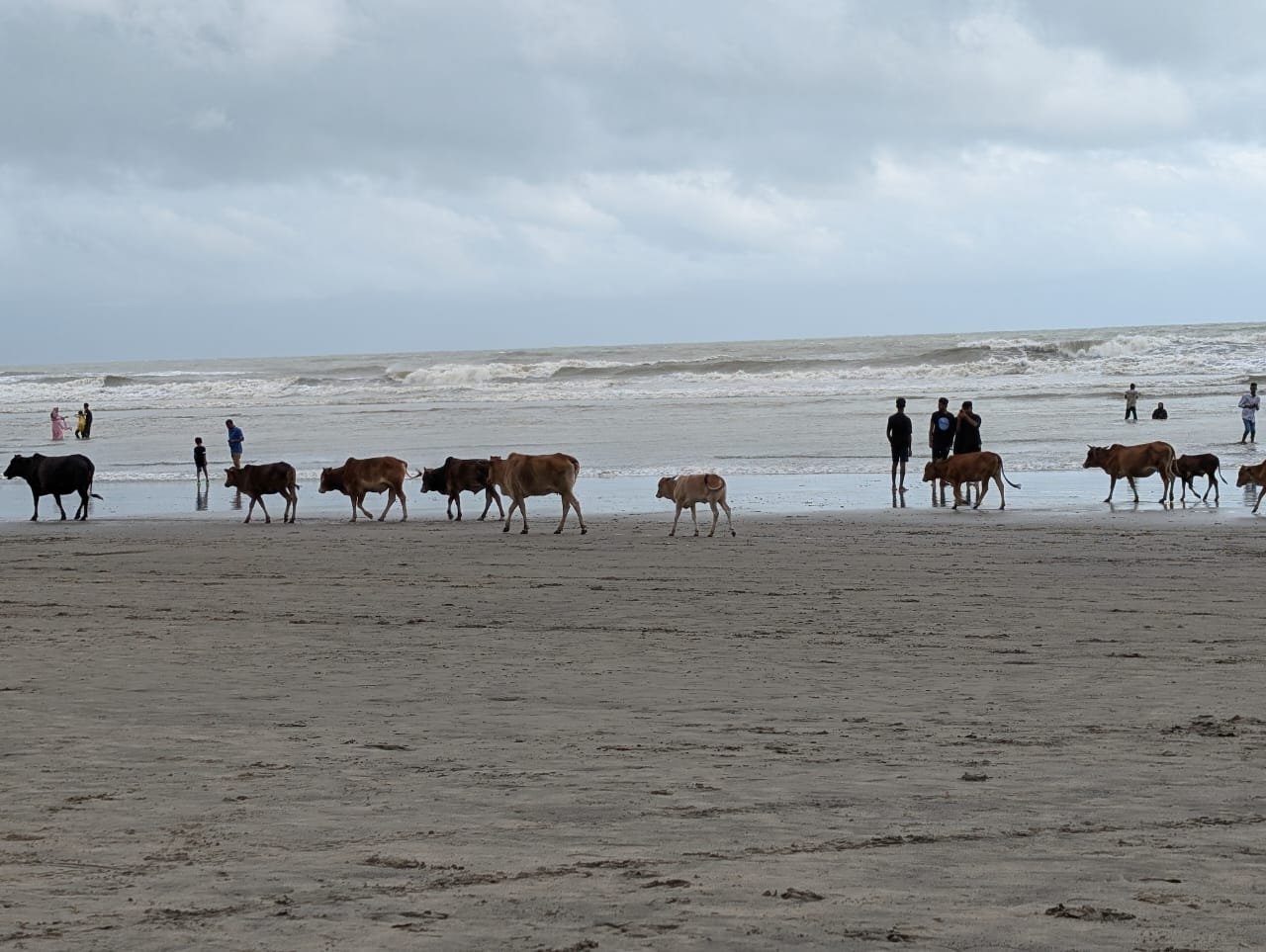
Shops and stalls in this area offer a wide range of products, including household items, garments, shoes, gifts, electronics, jewelry and books. However, eateries offering tasty quick meals and refreshments in the area will make sure your energy levels do not drop.
Dhaka’s major shopping options include Bashundhara City Mall, Jamuna Future Park (the largest mall in Bangladesh), Police Plaza Concord Shopping Mall and Pink City Shopping Complex in Gulshan. If you are not flying directly from abroad to Cox’s Bazar, then it is a good idea to travel light and buy clothes in Dhaka. Bangladesh is the world’s largest apparel exporter after China and has an extensive variety of clothing in its domestic market.
Cultural, historic gems
I also used the extra time I had in Dhaka to visit the majestic heritage site of Ahsan Manzil, where Dhaka’s erstwhile nawabs lived, Panam Nagar’s abandoned settlement and the Taj Mahal imitation near Sonargaon, a historic city about 35 kilometers (21.7 miles) from the capital.
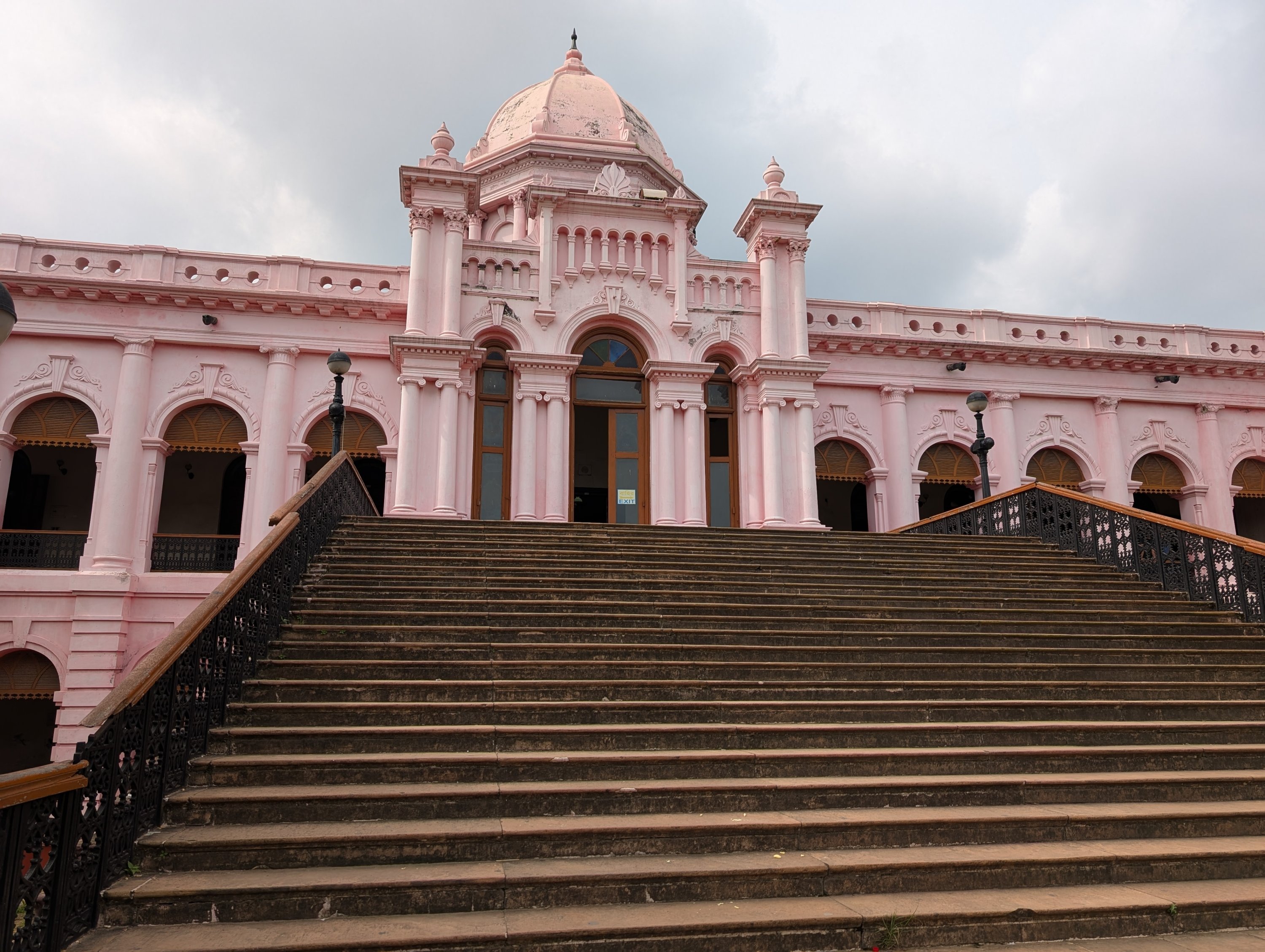
As the new week began (Sunday is the first day of the week in Bangladesh), those who had left to celebrate Eid in their hometowns began to return. Traffic in Dhaka got heavier, but I was in a lighter mood, having finally found a hotel in Cox’s Bazar’s popular hotel and motel zone.
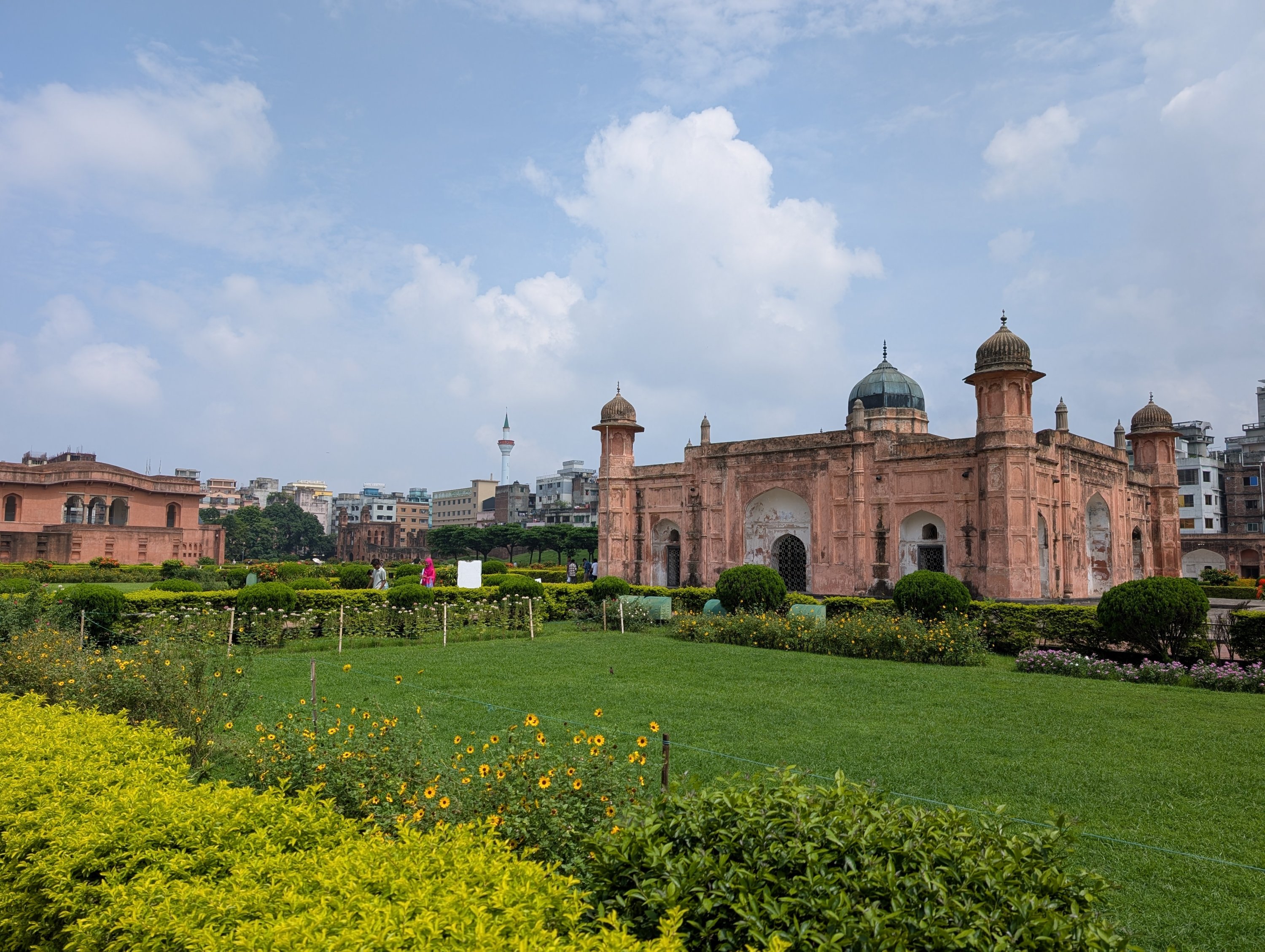
Journey to the longest beach
I traveled there on a luxury bus, with the journey through the pleasant tropical green taking more than 10 hours to cover a distance of 390 kilometers (242.34 miles). My hotel was within easy walking distance from Laboni beach. The sandy stretch between Laboni and Kolatoli beach, with Sugandha placed in the middle, is highly popular. The entire zone is designed to cater to tourists of every budget.
You can rent deck chairs to relax on the beach if you do not walk or dip your feet in the surf. Tender coconuts with high water content are readily available throughout Bangladesh, and they appear to be the freshest in the coastal regions.
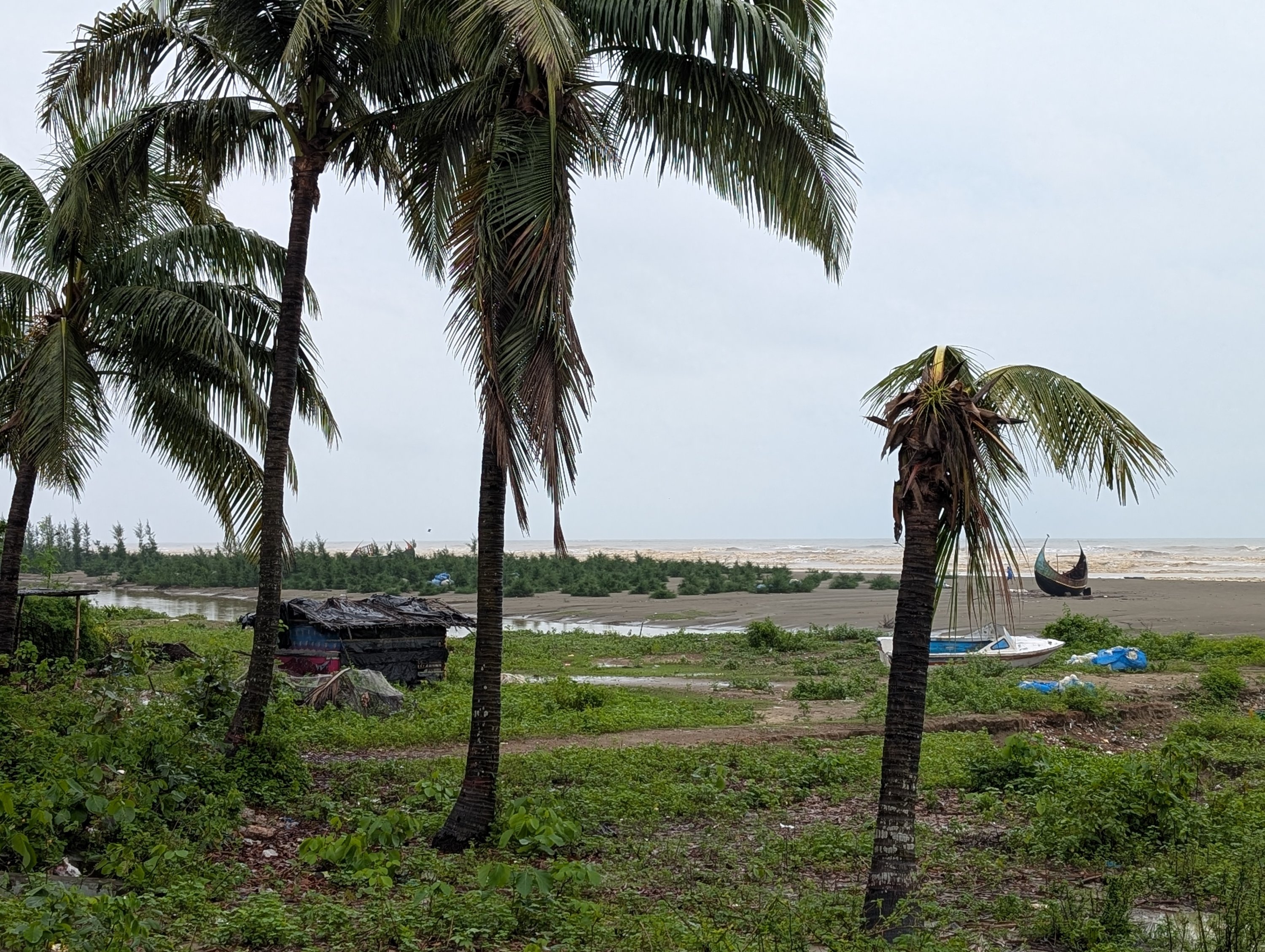
Flavors of Cox’s Bazar
Whether at hotel restaurants or in the market, you’ll find flavorful dishes showcasing local ingredients.
The Jol Torongo hotel on Laboni beach is an exciting place for Bangladeshi and Asian cuisine. Its large Bay View and Bay Terrace restaurants offer sea views and the grill shop is right next to the beach for barbecue lovers.
One of the meals I enjoyed most was lunch at Palongki restaurant. Palongki Inani lives up to its reputation of being an “authentic Bengali food restaurant.” My family and I ordered the curries (fish, beef and chicken) along with rice and the “Ashtobhuja” platter, which consists of eight types of bharta (a mashed dish) and bhaji (a vegetable dish), as suggested by restaurant manager Adnan Kabir.
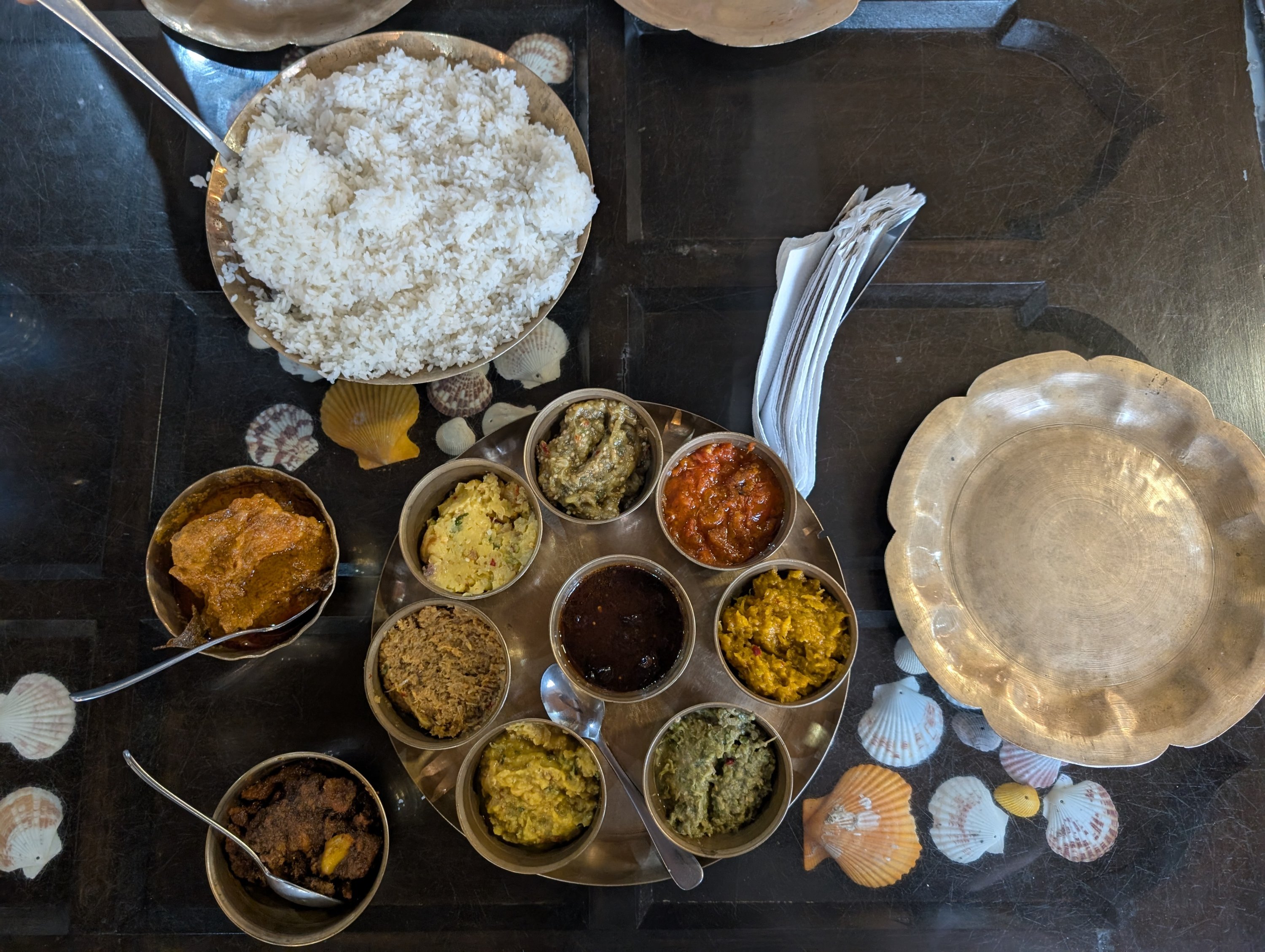
Jalebi and rasgulla (a dumpling dipped in syrup), or roshogolla, are Bengali sweets, but they tasted superb at this place. It was situated in a wonderful setting, with only the road separating the dining area from the sea.
Jafar, whose “CNG” (a motorized rickshaw) we had hired from Cox’s Bazar, seemed to know all the interesting places in the area, and the restaurant was his best recommendation.
Adnan also informed me that Palongki (also known as Palongkee) is an old name for Cox’s Bazar, which is named after Capt. Hiram Cox, an officer of the British East India Company. A market was established and named after Cox to honour him for his work in refugee rehabilitation during that time, according to information on the Bangladesh Tourism Board website.
Between beauty, crisis
While Hiram Cox lived in the 18th century, Cox’s Bazar is bravely tackling one of the biggest contemporary refugee problems. The region bordering Myanmar hosts a million refugees of the Rohingya ethnic community who have fled a campaign of genocide and ethnic cleansing in Myanmar.
Therefore, Cox’s Bazar is regularly in the news owing to developments related to the Rohingya humanitarian crisis. Various high-profile visits have highlighted the issue globally. Turkish first lady Emine Erdoğan visited in 2017 and U.N. Secretary-General Antonio Guterres was there in March 2025 on a mission of solidarity during the holy month of Ramadan.
This region, renowned for its stunning beauty, deserves wider publicity, particularly for its numerous tourist attractions.
Coastal wonders
The 30 kilometers I traveled, mostly along the coast, between Cox’s Bazar and Inani Beach, were dotted with secluded resorts and busy picnic spots amid empty sandy stretches. On one side was the alluring sea and on the other, verdant tropical vegetation. I saw some parasailing points along the way.
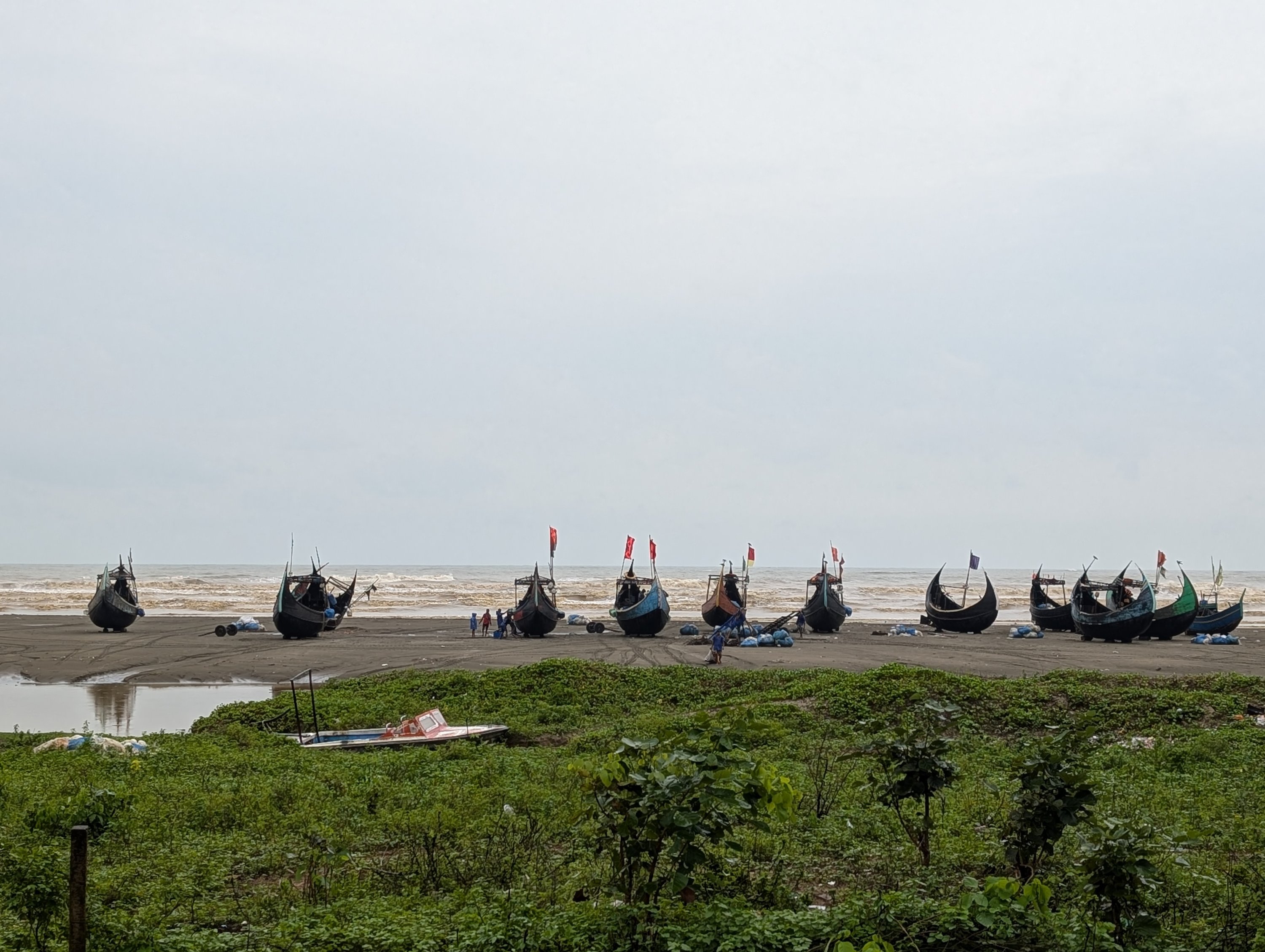
There were lovely sampan boats lined up in rows in specific locations. These traditional wooden boats pay homage to Bangladesh’s maritime heritage.
Due to the monsoon season, some excursions were suspended, the hotel’s tour desk informed me. I wanted to go on a day trip to St. Martin’s Island, Bangladesh’s only coral island in the Bay of Bengal. It is almost 10 kilometers from Teknaf on the mainland. Traveling to Teknaf itself, approximately 80 kilometers from Cox’s Bazar, means covering a significant portion of the longest beach and enjoying more of the region’s incredible scenery.
Lifestyle
Bodrum unveiled: Timeless escape on Türkiye’s turquoise coast
Bodrum is not just a destination: It’s a mood, a memory, a mirage of Aegean beauty that lingers long after summer fades. Nestled on the southwestern coast of Türkiye, Bodrum has long held its place as the ultimate seaside escape, effortlessly blending ancient history with contemporary luxury. Whether you arrive by yacht or by heart, the peninsula welcomes you with the scent of bougainvillea, the shimmer of turquoise waters and a rhythm that slows the soul.
Once home to the ancient city of Halicarnassus, Bodrum’s heritage runs deep – ruins of the Mausoleum of Halicarnassus, one of the Seven Wonders of the Ancient World, still whisper stories of forgotten kings. Yet today, Bodrum wears its past lightly. Cobbled streets wind past whitewashed houses with cobalt shutters. Fishermen mend their nets beside fashion boutiques and the call of seagulls blends with beats drifting from chic beach clubs.
The days here unfold like silk – smooth, languid and sun-drenched. Mornings begin with simit (Turkish bagel) and Turkish tea by the marina. Afternoons are for swimming in crystal coves; Küdür Bay, Paradise Cove (Cennet Koyu) and Bitez Beach are local favorites. As golden hour arrives, the town transforms. Sunset cocktails at Maçakızı or Mimoza in Gümüşlük are a must, where the horizon blurs into brushstrokes of orange and lavender.
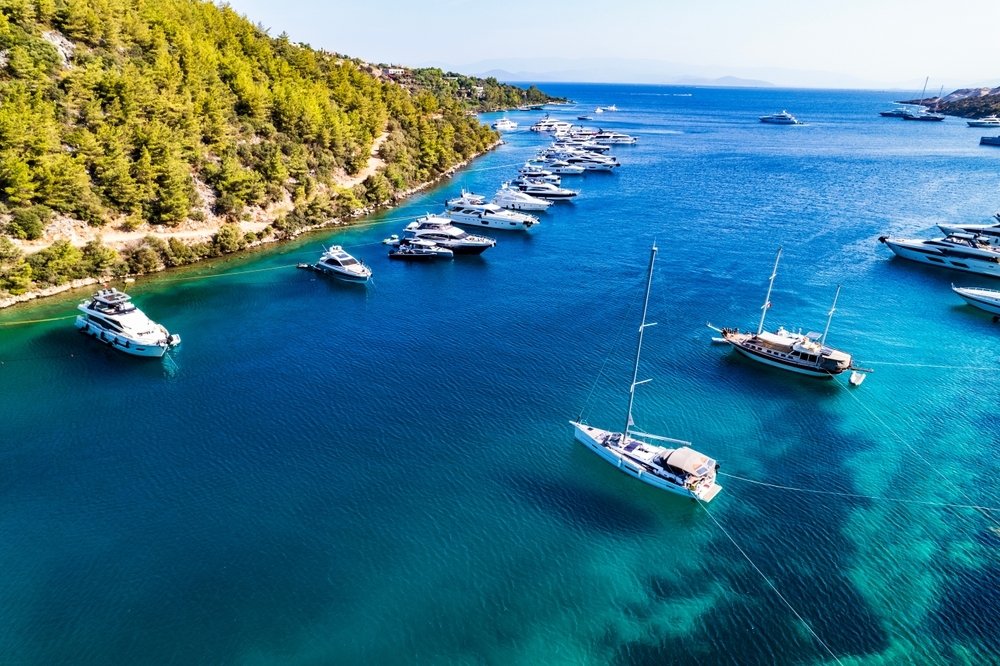
Bodrum’s nights are legendary. Whether it’s dining barefoot in the sand at Limon, dancing under the stars at Fenix, or watching the moon rise from the deck of a gulet, there’s a timelessness to the evenings here. Time doesn’t stop, but it certainly forgets to hurry.
And fashion? Bodrum has its own code. Think flowy linens, handmade sandals, silk scarves fluttering in the breeze. Jewelry that tells stories. A wardrobe that breathes like the sea. The style is as much about ease as it is about elegance – resort chic with a bohemian soul.
But beyond the luxury, the essence of Bodrum lies in its contradictions: ancient yet modern, vibrant yet serene, wild yet refined. It’s where you can lose yourself and find yourself all at once. It’s not just a summer place – it’s a state of being.
Bodrum is a reminder that beauty doesn’t need to shout to be heard. It just needs to shimmer.
Where to go
Bodrum is a peninsula of personalities – each bay, each village tells its own story. Here’s where to wander:
Bodrum Town
Start in the heart. The Bodrum Castle, built by the Knights of St. John, stands proudly between two harbors. Inside, the Bodrum Museum of Underwater Archaeology is a hidden gem. The marina is lined with elegant cafes, perfect for people-watching with an espresso or a chilled rose. By night, the old town pulses with energy – don’t miss the rooftop bars tucked behind stone alleys.
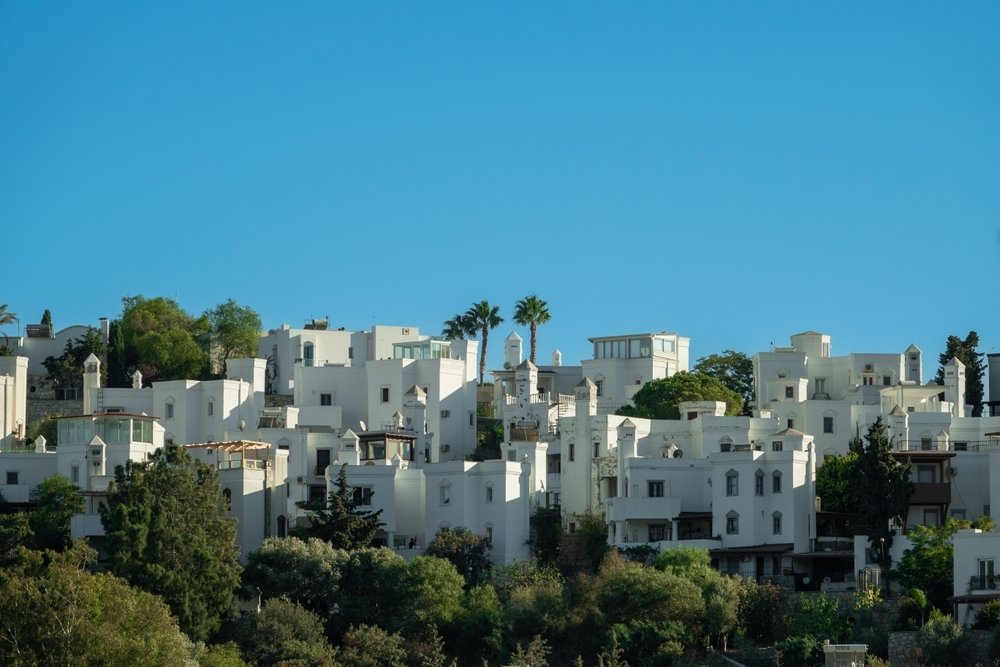
Gümüşlük
Romantic, rustic, and utterly charming. Walk along the sunken path to Rabbit Island at sunset or dine seaside with your feet in the sand. Limon, a garden restaurant overlooking the bay, offers unbeatable views and a bohemian atmosphere. Gümüşlük is also an artists’ haven – don’t leave without exploring the small ateliers and handmade ceramics.
Yalıkavak
Polished and glamorous, this is Bodrum’s answer to St. Tropez. The Yalıkavak Marina is home to superyachts, luxury boutiques (from Dior to local designers) and world-class restaurants. Zuma, Novikov and Lucca by the Sea all bring global flair. If you want to party, head to famous beach clubs like Bagatelle or Scorpios Bodrum (new and scene-stealing).

Türkbükü
Long the favorite of Turkish celebrities, Türkbükü’s wooden piers transform into beach lounges by day and candlelit dining spaces by night. Stay for a sunset aperitivo and a slow seafood dinner. It’s barefoot luxury at its finest.
Paradise Cove
Aptly named, this protected bay with clear water and pine-framed coves is ideal for a private swim or yacht escape. Best accessed by boat, but even from land, it feels like a hidden paradise.
Ortakent & Bitez
Less flashy, more relaxed. Ideal for long beach days, windsurfing and eating gözleme made by local women under olive trees. Bitez also has an up-and-coming dining scene, perfect for a quieter evening.
Mazı Village
For those who want Bodrum before the boom. Sleepy fishing villages, secret coves and olive orchards. A drive out here feels like stepping back in time. Come for the peace, stay for the magic.
Lifestyle
Zindan Cave: Türkiye’s hidden gem for history, nature lovers
Located in the Aksu district of Isparta, in Türkiye’s Mediterranean region, Zindan Cave has become an increasingly popular attraction for both local and international visitors. Opened to tourism 23 years ago, the cave offers a rare combination of historical richness, cool underground waters and stunning natural formations.
Perched at 1,300 meters (4,265 feet) above sea level, the 765-meter-long cave is home to remarkable archaeological remains, including a Roman bridge, the open-air Eurymedon Temple and a mosaic believed to depict the river goddess.
Inside the cave, visitors are immersed in a dramatic landscape of stalactites, stalagmites and towering columns – formed over thousands of years. The sound of water from an underground stream echoes through the cavern as it cascades over rocks, adding to the cave’s mystique.
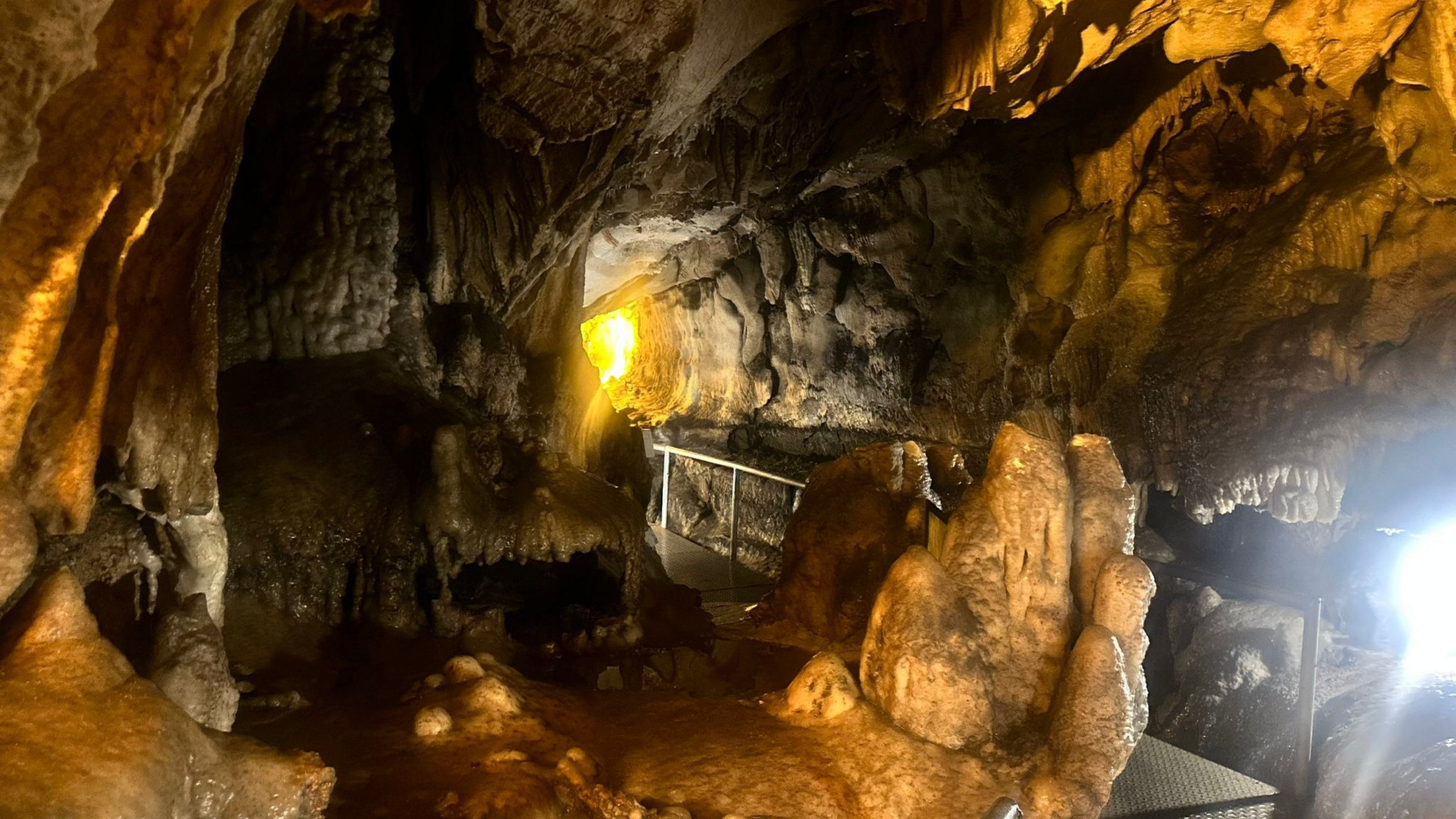
The mineral-rich stream, believed by locals to be beneficial for the skin, has been confirmed through scientific analysis to contain high levels of calcium and magnesium – further sparking interest among visitors.
Zindan Cave has served as a site of religious and cultural importance for various civilizations, including pagans, ancient Greeks and Romans. Despite centuries of change, the temperature inside remains a steady 5 degrees Celsius (41 degrees Fahrenheit) year-round, making it a refreshing retreat during the hot summer months.
One of the cave’s most striking features is the Eurymedon mosaic, made by hand from black, white and red stones. It greets visitors at the entrance, just beyond the historic Roman bridge. The site as a whole evokes the feel of an open-air museum, with engraved stones and columns scattered throughout.
Zindan Cave attracts nearly 50,000 visitors annually. Its walkways and lighting system, developed during its transformation into a tourist site, allow for safe exploration of its natural and archaeological wonders.
Aksu District Governor Salih Zafer Aydın highlighted the cave’s unique combination of historical, ecological and cultural significance. “Visitors first cross the Roman bridge, followed by ancient carved stones and the Eurymedon temple area. Just beside it lies the mosaic of the River Goddess, uncovered through archaeological excavations,” he explained.
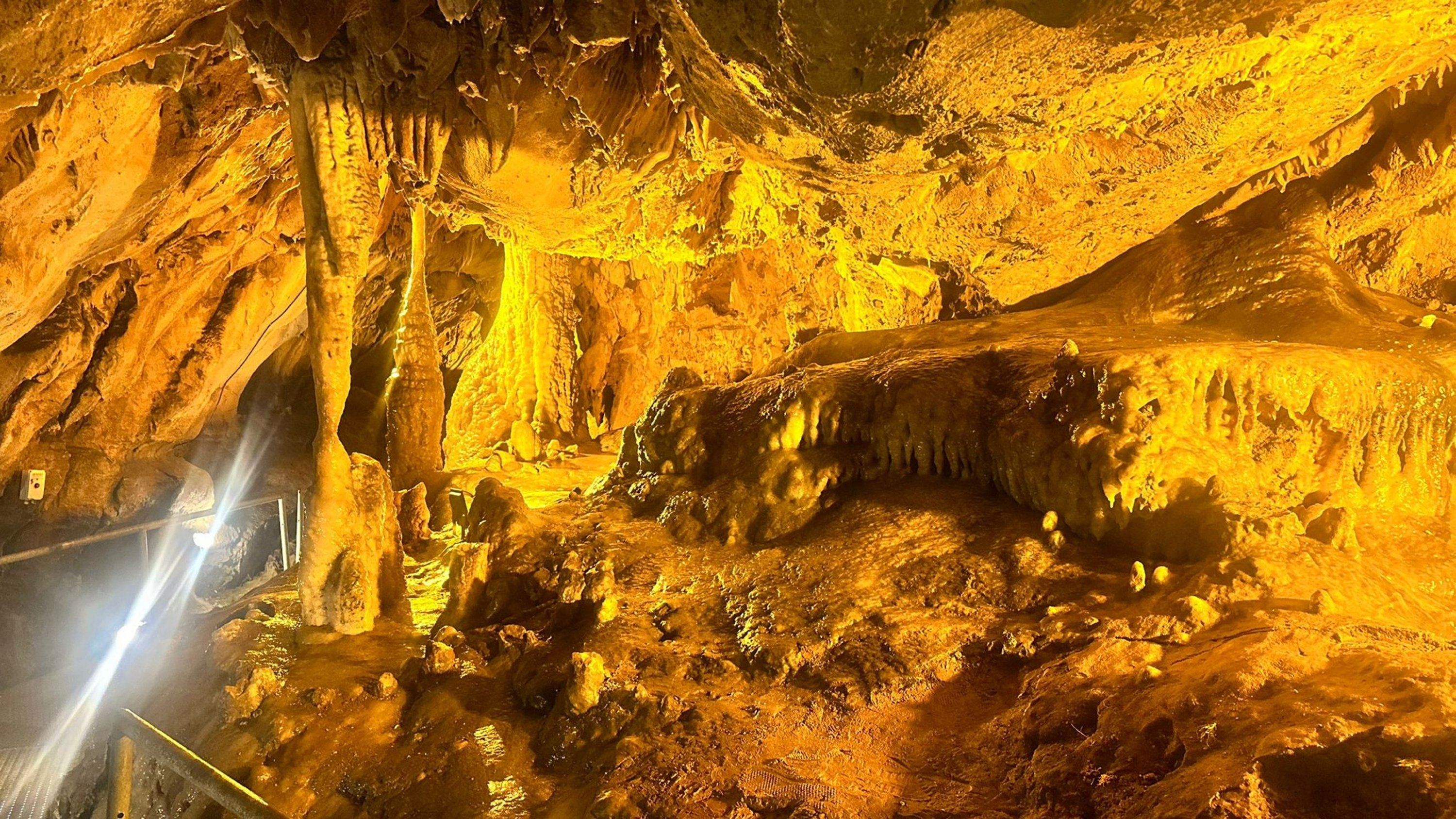
He noted that the far end of the cave features an area believed to have once served as a bath, where the mosaic is located. “There is a long-standing belief that the water flowing from this ancient bath is good for the skin. Scientific studies partially support this claim based on the water’s composition,” Aydın added.
Salih Ölmez, a visitor from Hatay, shared his experience: “When I heard about the cave, I had to come see it. It’s truly beautiful – with water still flowing inside. You can really feel the presence of different eras here. I highly recommend it to everyone.”
Lifestyle
Italy’s most poetic coastline: The Amalfi Coast
Imagine the refreshing scent of lemon trees on one side, and colorful towns cascading down cliffs on the other, quietly watching the waves of the Mediterranean. The Amalfi Coast is not just unforgettable for its breathtaking beauty but for the feelings it evokes. In Positano, pastel-colored homes cling to the hills, glowing golden at sunrise and bathed in magic at sunset. Strolling through Amalfi’s historic piazza, people watching in the lively streets of Positano, or witnessing a fiery sunset in the serene village of Praiano, every moment becomes a memory.
Where is the Amalfi Coast?
Stretching along the southern edge of the Bay of Naples between Sorrento and Salerno, the Amalfi Coast winds through dramatic cliffs, offering shelter to picture-perfect villages nestled between rugged mountain slopes.
During summer, Turkish Airlines (THY) operates two direct flights daily from Istanbul Airport to Naples. From Naples Airport, Positano is approximately a 1.5-hour drive, depending on seasonal traffic.
First stop: Positano
Positano feels like a scene from a classic Italian film. With its narrow stairways, charming alleyways and vibrant buildings, every corner invites you to take a photo.
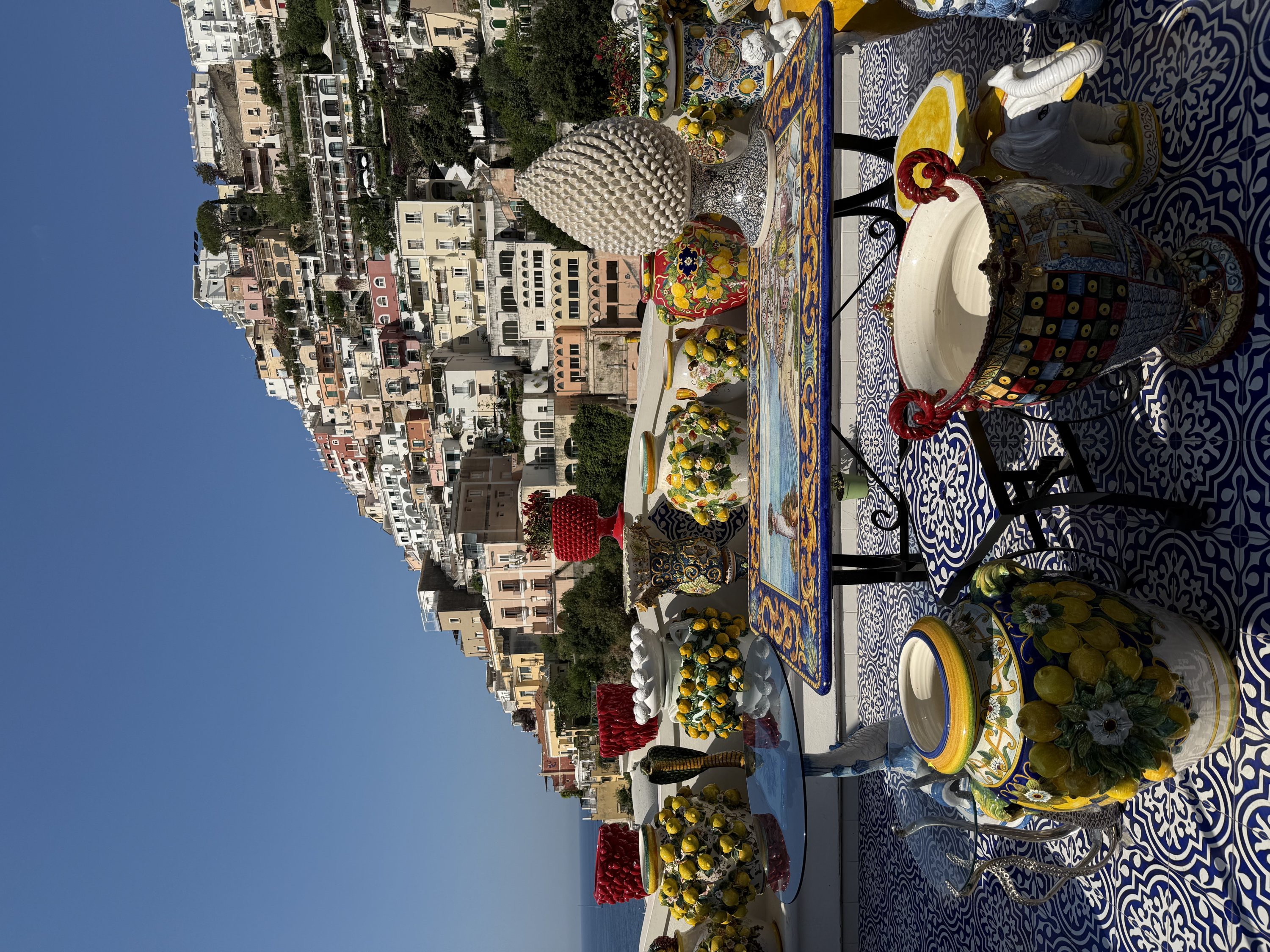
Home to just 4,000 residents, the village welcomes up to 12,000 visitors daily during peak season, so be prepared for some traffic.
Must-see highlights
Church of Santa Maria Assunta: One of the town’s iconic landmarks, offering a spiritual and architectural experience.
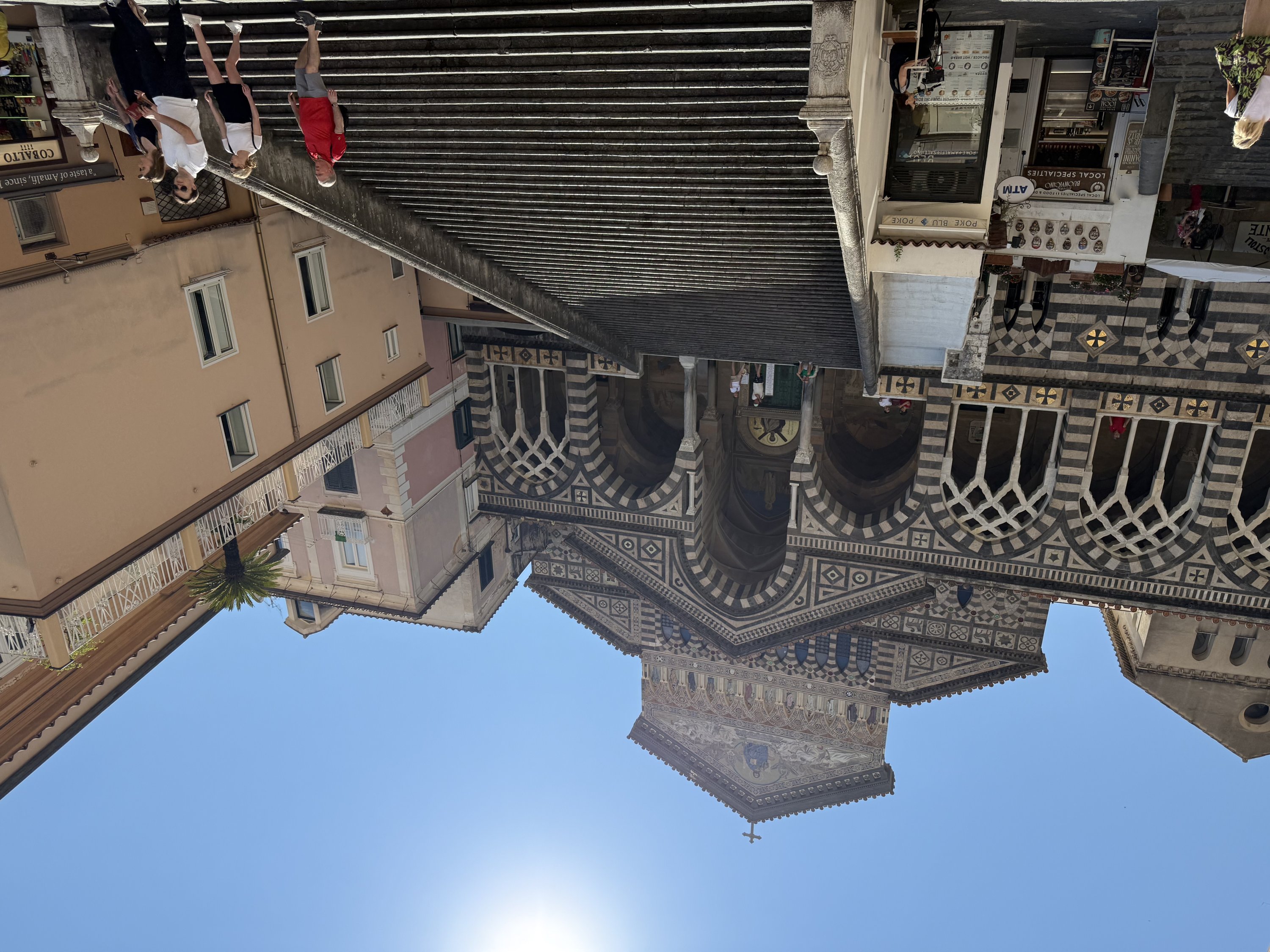
Museo Archeologico Romano: A fascinating stop for those interested in local history and Roman archaeology.
The Path of the Gods (Sentiero degli Dei): A scenic trail with panoramic views, perfect for hiking enthusiasts.
My favorite restaurants
A cherished seaside restaurant, Le Tre Sorelle is run by Luigi and Giovanna, the nephews of founder Giovannina. For over 60 years, the restaurant has combined quality ingredients with the simplicity of traditional family recipes. It’s more than just great food and hospitality, it’s a generational love story. It remains my all-time favorite for its unbeatable coastal location and comforting cuisine.
A gem in Positano, Casa Mele offers modern Italian dishes and an open kitchen where guests can watch culinary magic unfold. Known for both its elegant dining and hands-on cooking classes, the restaurant focuses on fresh, local ingredients. With Michelin star-level cuisine and service, it’s a must for any food lover.
Where to stay
A favorite among global celebrities, Il San Pietro di Positano is celebrating its 55th anniversary this year and for good reason. I’ve stayed in countless hotels through my work, but this one truly stands out. Light-filled, effortlessly elegant, and with all 56 rooms offering private terraces overlooking the sea, the hotel feels like a retreat into serenity.
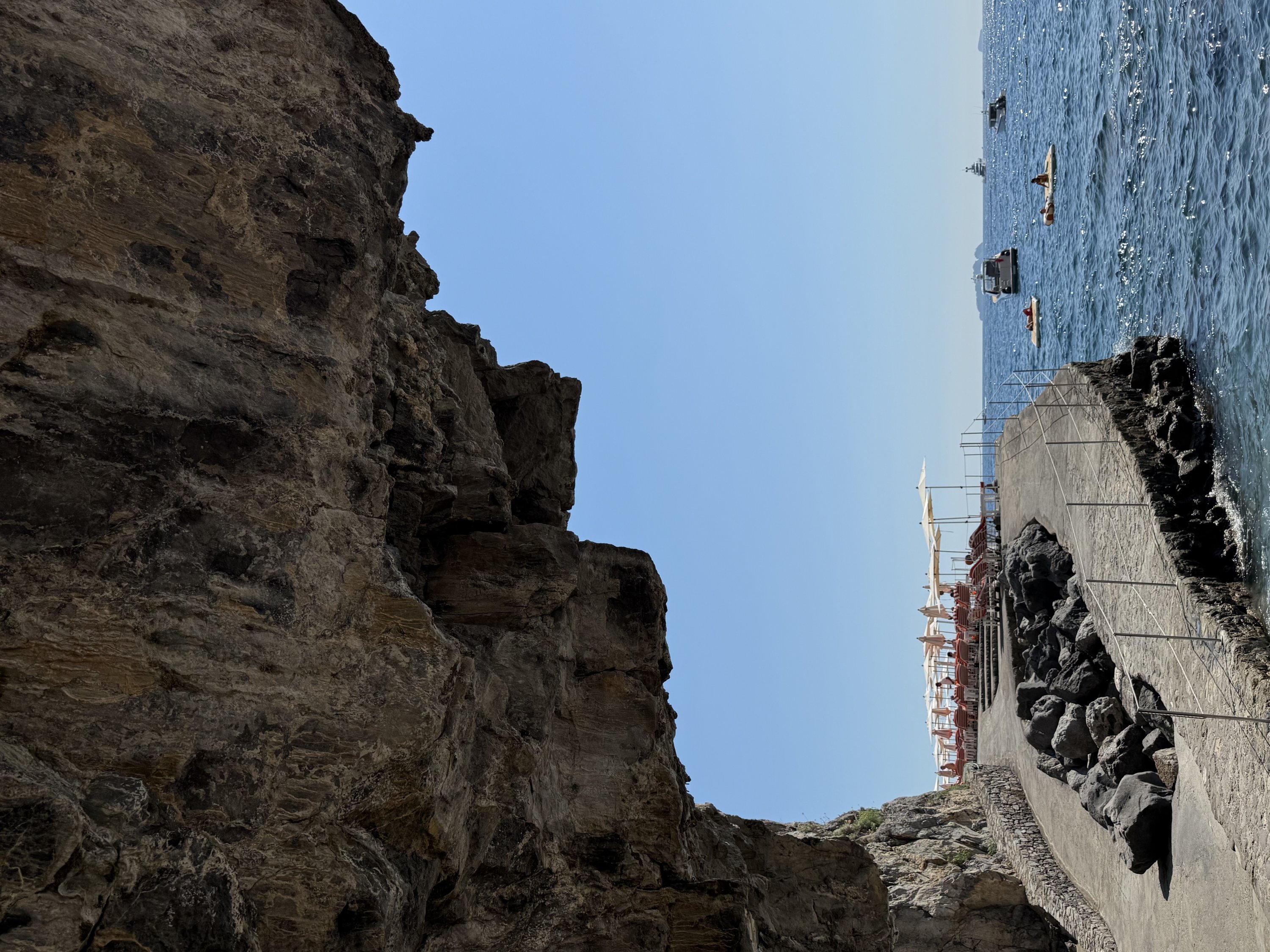
The rooms, redesigned by Fausta Gaetani, feature hand-painted ceramic tiles, Mediterranean-toned fabrics, antiques and crisp white walls blending luxury with coastal charm. Every corner, every plant, every detail is curated with care. Despite its grandeur, the hotel feels like home. The staff offers warm, personal hospitality, making you feel more like a guest in a private villa than a hotel.
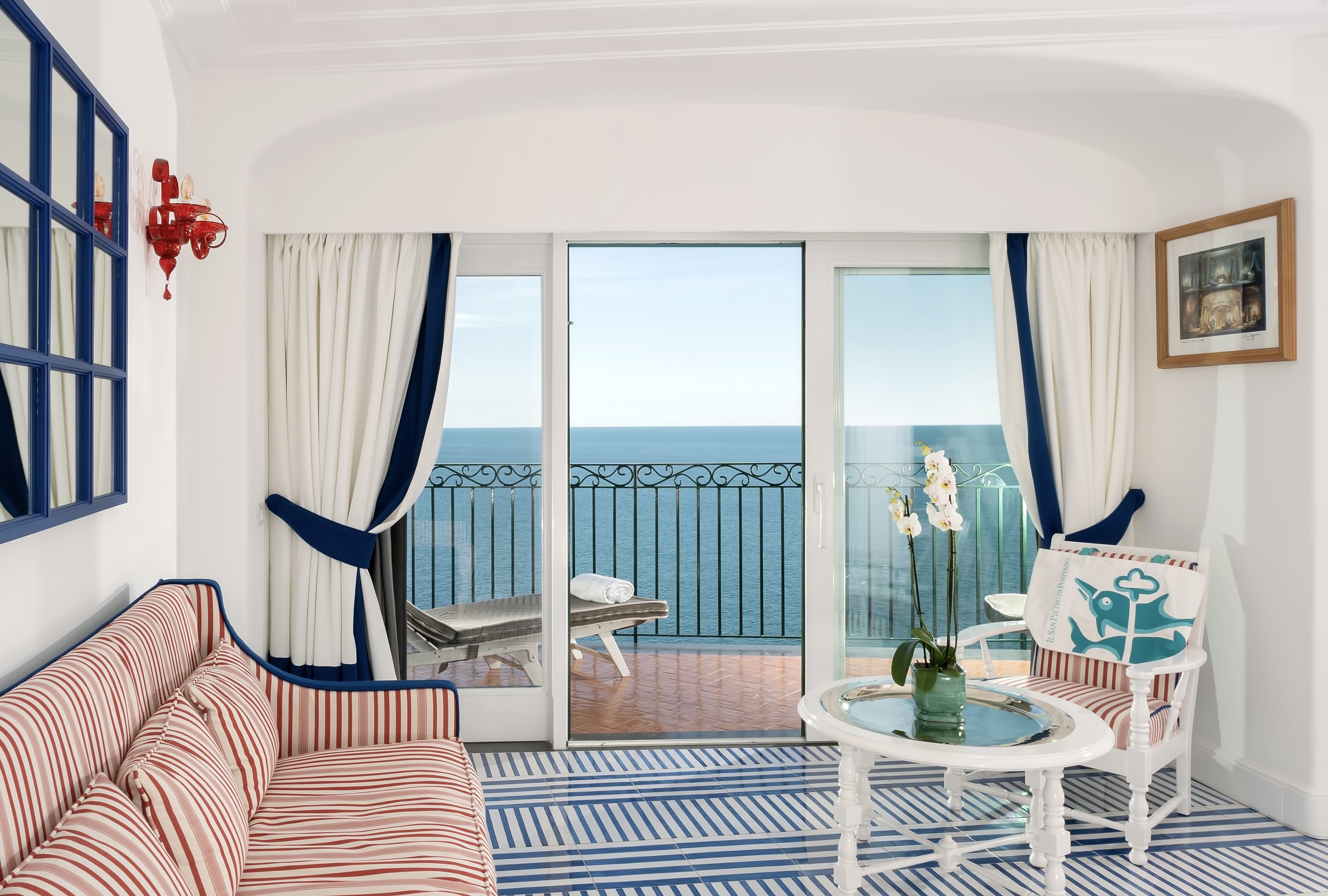
You’ll often spot General Manager Andrea Zana personally greeting guests, whether at the reception, restaurant, beach or gardens.
Dining at Il San Pietro
Zass Restaurant: Michelin-starred chef Alois Vanlangenaeker and his team craft dishes from fresh ingredients, many sourced from the hotel’s own 10,000-square-meter terraced gardens. Dine on a romantic veranda facing Praiano’s glittering lights or opt for the exclusive chef’s table in the kitchen.
Carlino: Located by the water, this casual beachfront restaurant is perfect for lunch. The fresh daily seafood and pasta are divine.
The hotel also offers a private sundeck carved into the rocks, complete with ladders into the sea. It’s here, under the sun and surrounded by calm, that you begin to understand what Italians mean by La Dolce Vita.
Next stop: Amalfi
Just a 40-minute drive from Positano, Amalfi is a tiny town with a big heart. Explore the majestic Cathedral of Amalfi, a striking blend of Norman and Arab architecture, along with its peaceful cloister. Visit the Museo della Carta to discover the town’s historic role in papermaking and wander through the narrow, covered alleys that lead toward the Valle dei Mulini (Valley of the Mills).
Stop by Cafe Pansa in the main square, famed for its delicate pastries and beloved lemon cake, ideal for people watching while enjoying a sweet bite.
A hidden treasure: Praiano
Nestled between Positano and Amalfi, Praiano is quieter and often overlooked, but its charm is undeniable.
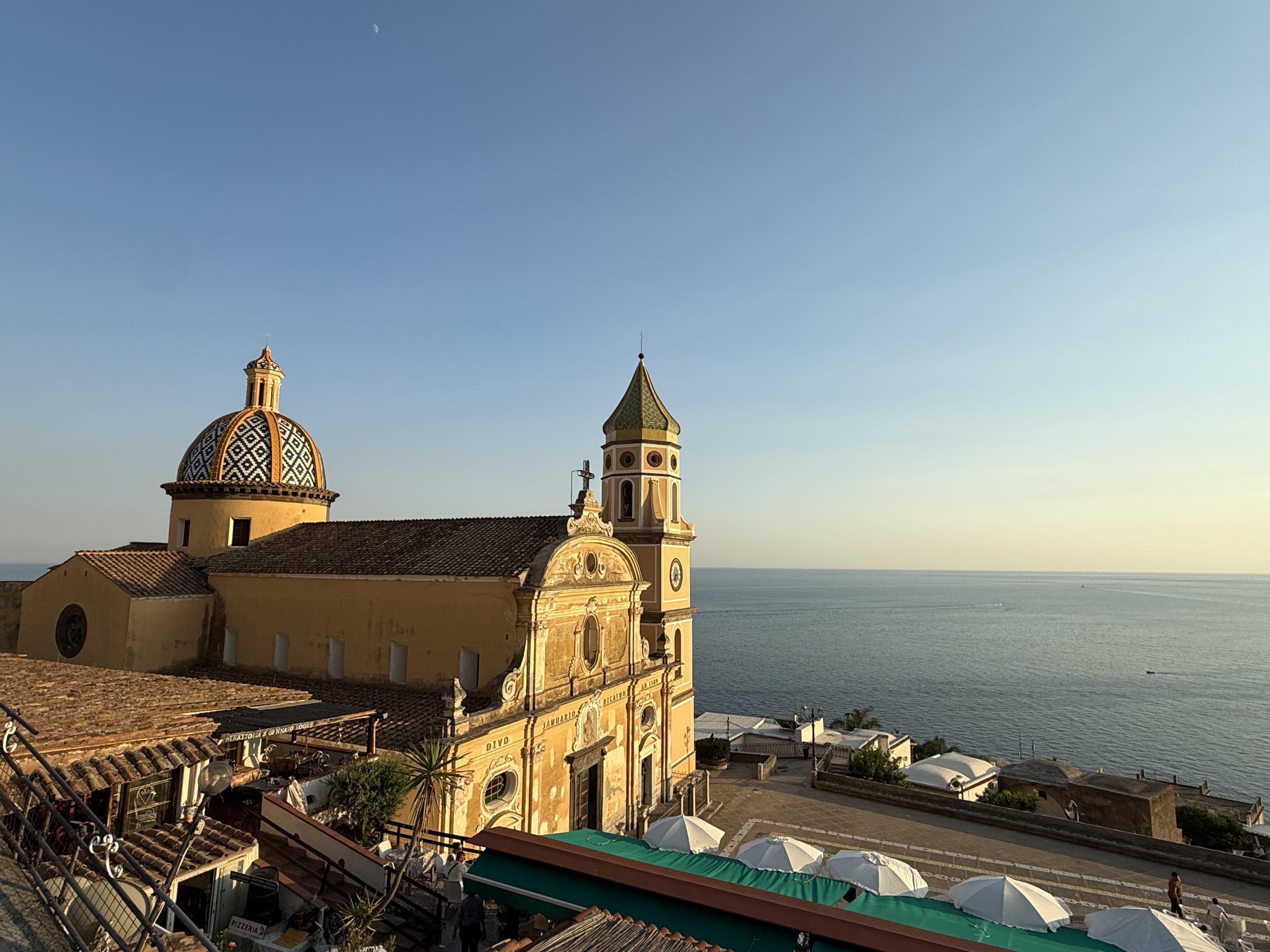
As you wander its narrow streets, make time for Cafe Mirante, a local secret with breathtaking views. Sip an espresso or cocktail to the sound of classic Italian tunes and feel, even for a moment, like time has paused.
From cliffside walks to Michelin-starred dining, ancient churches to hidden cafes, the Amalfi Coast isn’t just a destination, it’s a feeling that lingers long after you leave.
Lifestyle
Where nature meets refinement: Göcek ready for world spotlight
Imagine a place that gently proves you wrong every time you think “nothing can surprise me anymore.” Imagine an experience so intentional, so quietly rich, that it makes you pause and whisper, “I’ve never felt this before.” That’s exactly what happened when I arrived at Ahama, tucked away in southwestern Türkiye’s Günlüklü Bay, Göcek, a destination that isn’t just a retreat, but a return. Here, time slows down. Nature speaks, and for once, you actually listen. The Mediterranean glistens in the background, ancient sığla trees (sweetgums) whisper stories from centuries past, and every step feels like a reminder of something you forgot you needed. This isn’t luxury as we’ve come to know it, it’s something deeper. It’s luxury with soul. Ahama doesn’t try to impress you with grandeur. Instead, it invites you to feel. Built with raw, natural materials like jute, wood, stone and linen, the architecture quietly dissolves into the landscape. Inspired by Japanese minimalism and the wisdom of ancient Lycia, the space breathes. It’s a kind of silent elegance that doesn’t need to shout to be seen.
Scent and sound
Ahama is nestled in the heart of a 20-hectare protected forest, surrounded by Göcek’s signature sığla trees – trees that grow only here, their fragrance thick in the air, grounding you. Their presence is calming, almost ceremonial. You begin to breathe differently. Walk differently. Think differently. And though it feels like you’re far from it all, Göcek is only 20 minutes away, and Dalaman Airport is only 35.
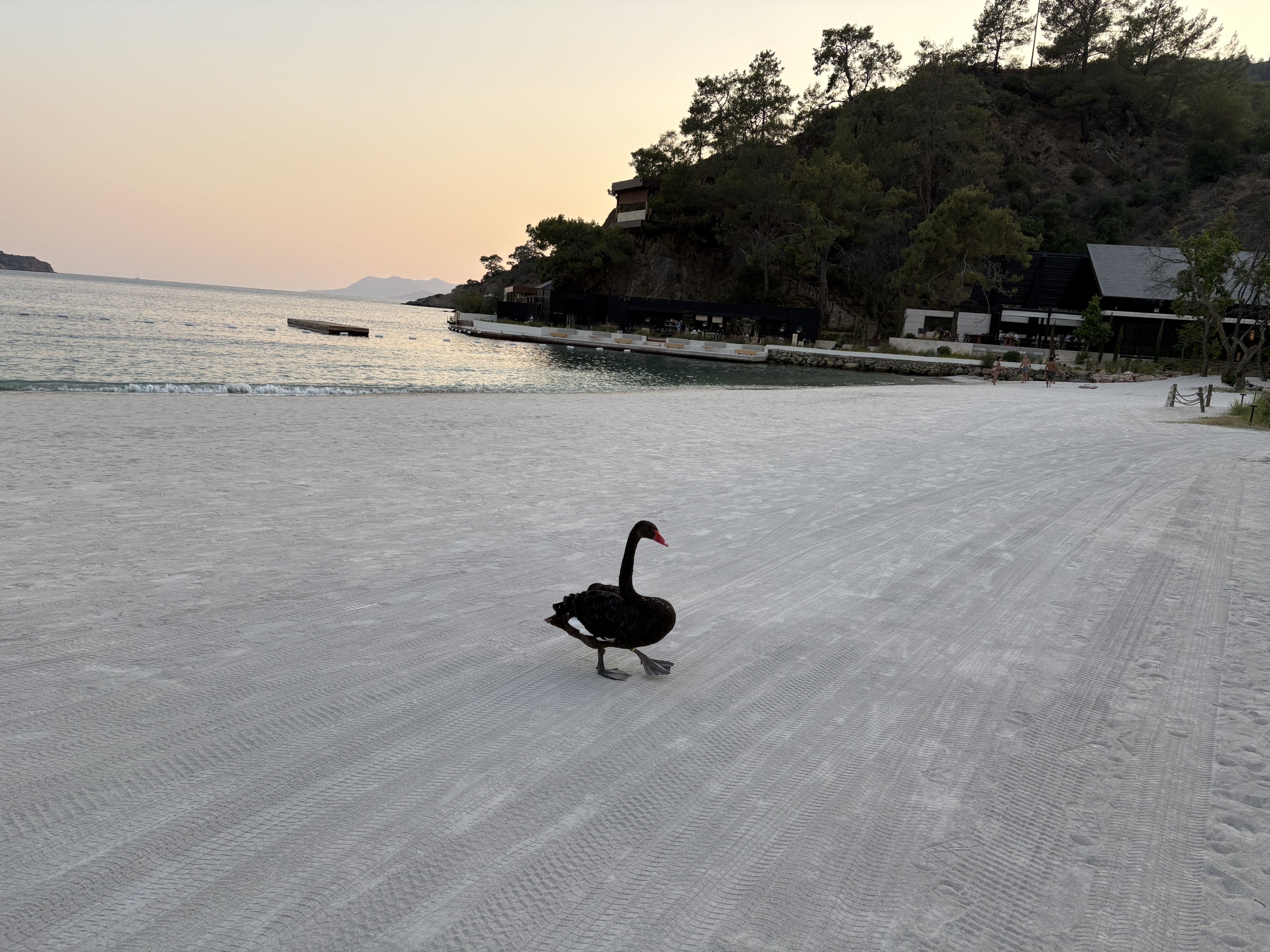
You’re not escaping life, you’re simply stepping outside of its noise. Here, everything is curated not for your comfort but for your clarity. The Sound Temple, designed by the globally renowned Hector Esrawe, hosts healing sound journeys beneath the canopy of ancient trees. Morning yoga on the shoreline, breathwork, water therapy, somatic movement sessions, and even art therapy fill the days with meaning rather than noise.
Dining: A sensory ritual
The culinary experience at Ahama isn’t about indulgence, it’s about connection. Every meal feels like a story, every bite a ritual. Mezkla Göcek blends the boldness of Mexican cuisine with the subtle grace of the Mediterranean. It’s not fusion, it’s harmony. At Ege Umi, chef Mustafa Otar crafts dishes that are rooted in Aegean memory and refined through Japanese technique. You don’t just eat here, you feel what you’re eating. Sardines meet ponzu and olive oil. Sea bass is steamed with bergamot. Custard carries the soul of Ezine cheese. Everything whispers, “taste this moment.” And then there’s AY, where cooking becomes a primal, almost poetic act. Fire, smoke, salt and time shape dishes like whole roasted goat, smoked taramasalata, and fresh seafood grilled over an open flame. It’s food that connects you to something ancient.
MIORI by the Sea
One of the most talked-about new venues this season is “MIORI by the Sea,” a place where quiet luxury takes center stage and transports you straight to the heart of Italy. What sets MIORI apart is not only its serene and sophisticated atmosphere but also its bold collection of contemporary art pieces that command attention. This unique blend of refined elegance and artistic ambition makes MIORI a must-visit destination for those seeking an exclusive experience that speaks both to the senses and the soul.
Tucked away in the tranquil Bedri Rahmi Bay of Göcek, MIORI by the Sea unveiled its highly anticipated Riva Lounge with a dazzling launch on July 4. Set to become Türkiye’s first true gastro-destination, the event perfectly captured MIORI’s ethos: good food, good mood and good company. But what truly elevated the evening beyond the expected was the seamless blend of cuisine, atmosphere, and art, turning a night out into something unforgettable. As the sunset gave way to an electric set by Solange, SinCasa and Yakuza, guests found themselves immersed in an experience that was both rooted in the Aegean and undeniably global.
What caught my eye just as much as the scenery was the art and sculptural works that added soul to the space. I was especially drawn to Mert Ege Köse’s expressive piece and a stunning installation by Jake Michael Singer, both placed thoughtfully as part of a curated dialogue between nature and creativity.
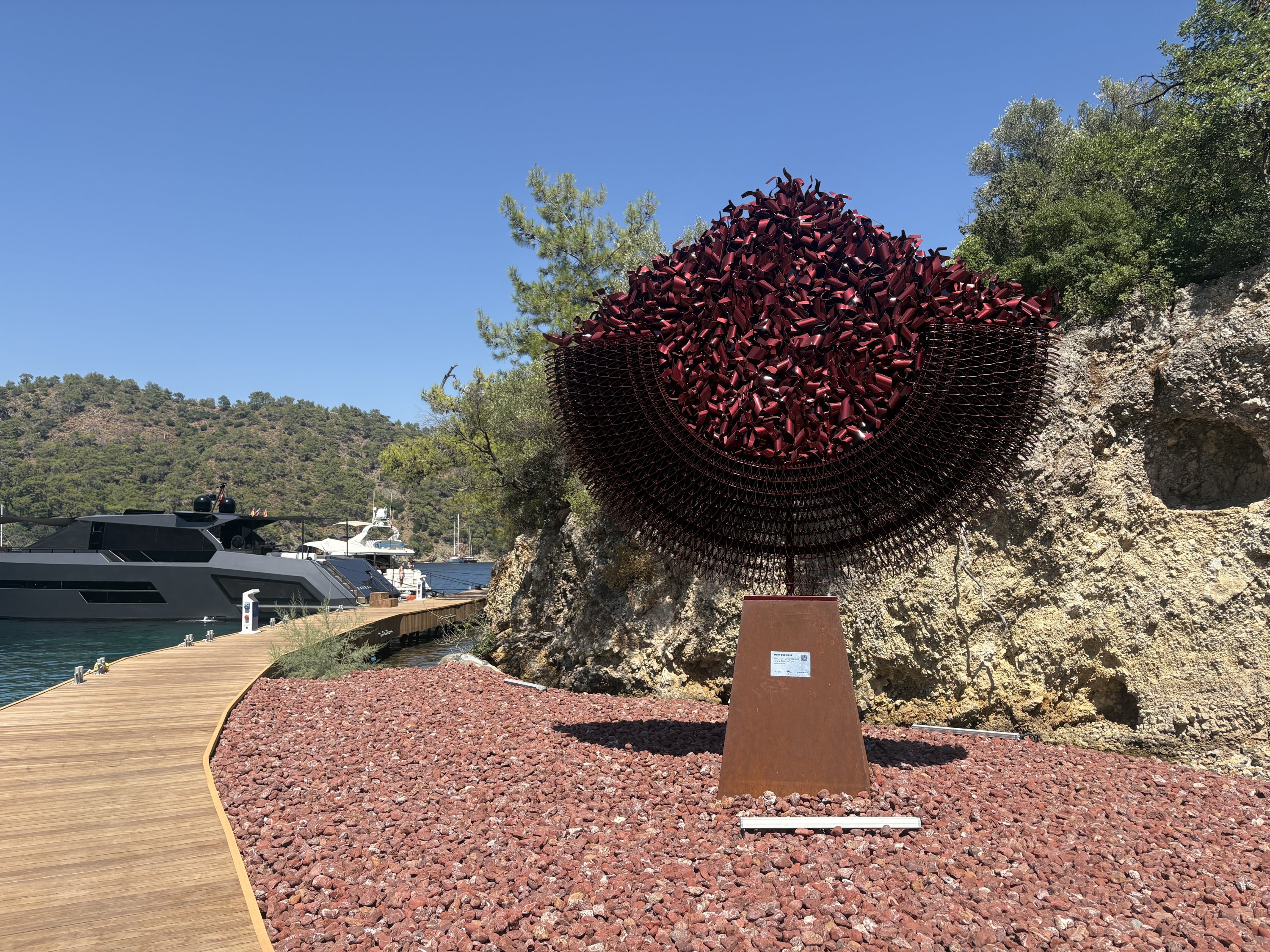
The selection reflects the eye of AWC Contemporary gallery owner Haldun Kilit, whose presence in Göcek signals something bigger: the rise of an Aegean art scene that’s now ready to speak to the world.
-

 Daily Agenda2 days ago
Daily Agenda2 days ago5 years ago today survived the Hagia Sophia Mosque chains
-

 Politics2 days ago
Politics2 days agoCease-fire key to peace at Türkiye-Russia-Ukraine talks: Fidan
-

 Sports2 days ago
Sports2 days agoArda Güler left in cold as Mbappe snatches Real Madrid’s No. 10
-

 Sports2 days ago
Sports2 days agoGalatasaray flex firepower, top Cagliari 3-1 in preseason clash
-

 Refugees2 days ago
Refugees2 days agoTurkey mourns 5 volunteer firefighters killed battling wildfires
-
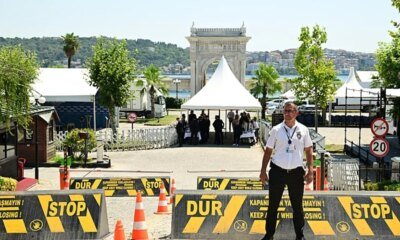
 Daily Agenda3 days ago
Daily Agenda3 days agoThe door opened to peace is Istanbul: Russia and Ukrainian delegations on the table
-
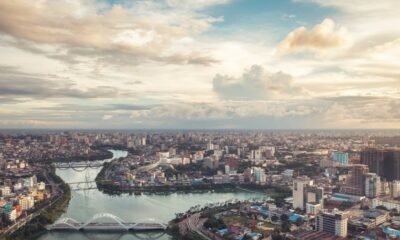
 Lifestyle3 days ago
Lifestyle3 days agoJourney through Bangladesh’s green heart to world’s longest beach
-

 Politics3 days ago
Politics3 days agoErdoğan marks 106th anniversary of Erzurum Congress




